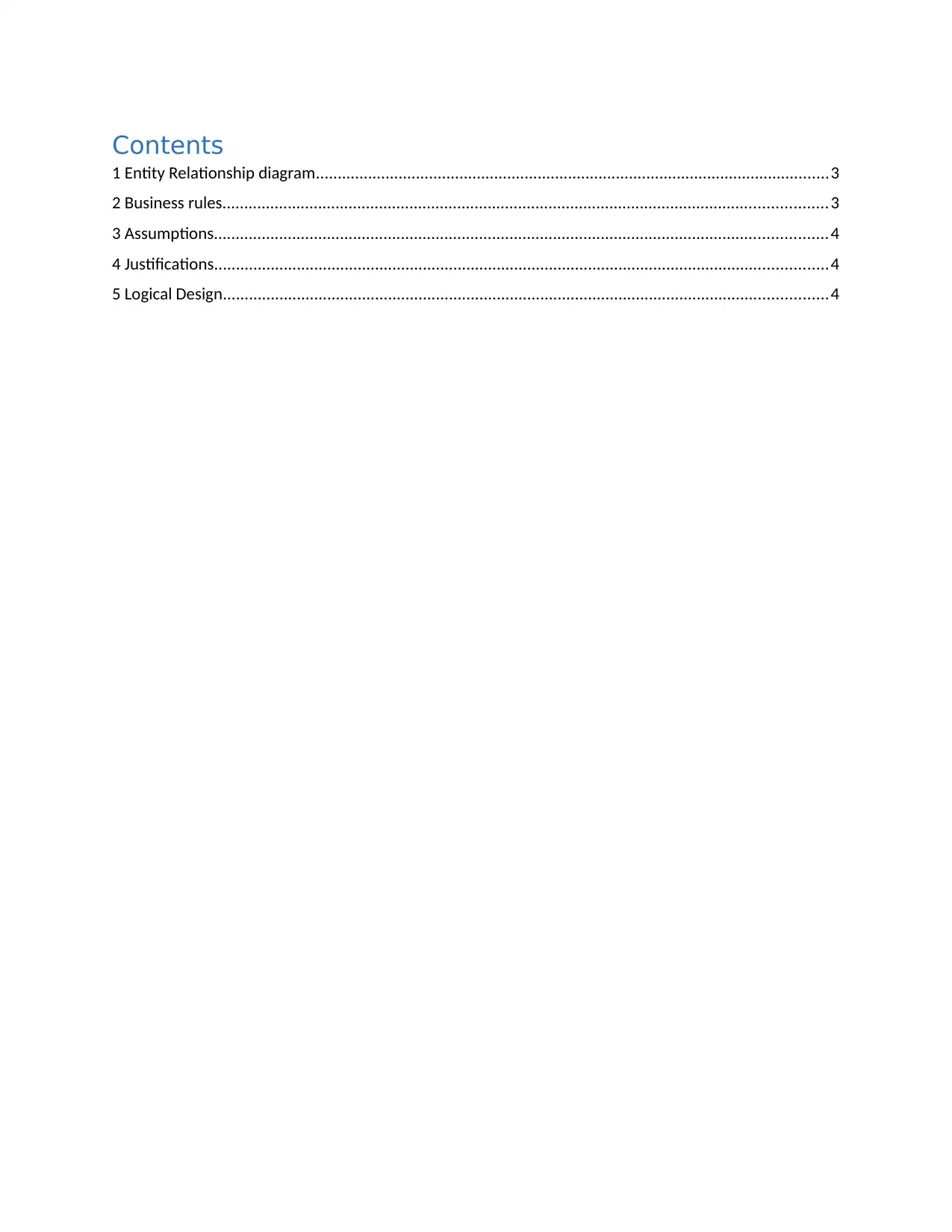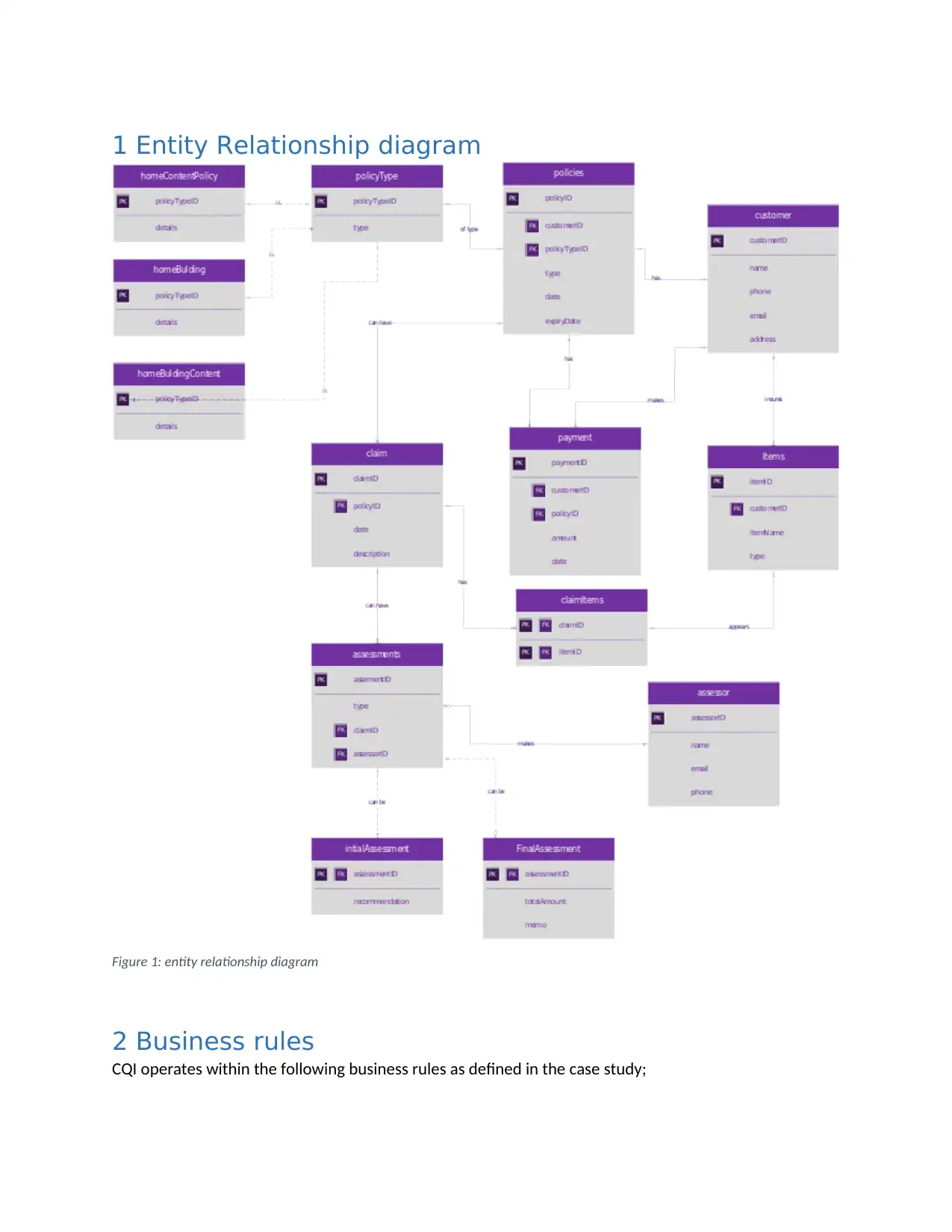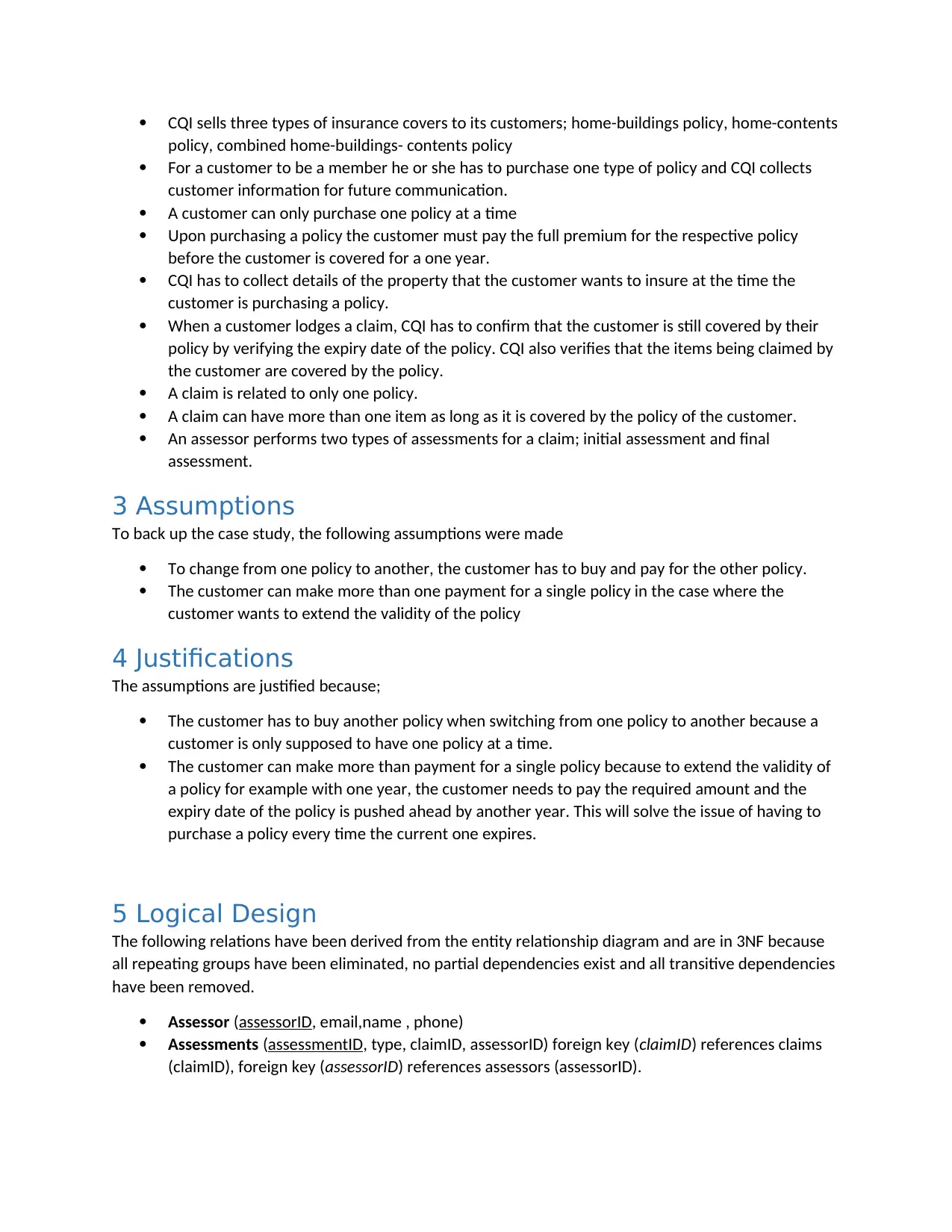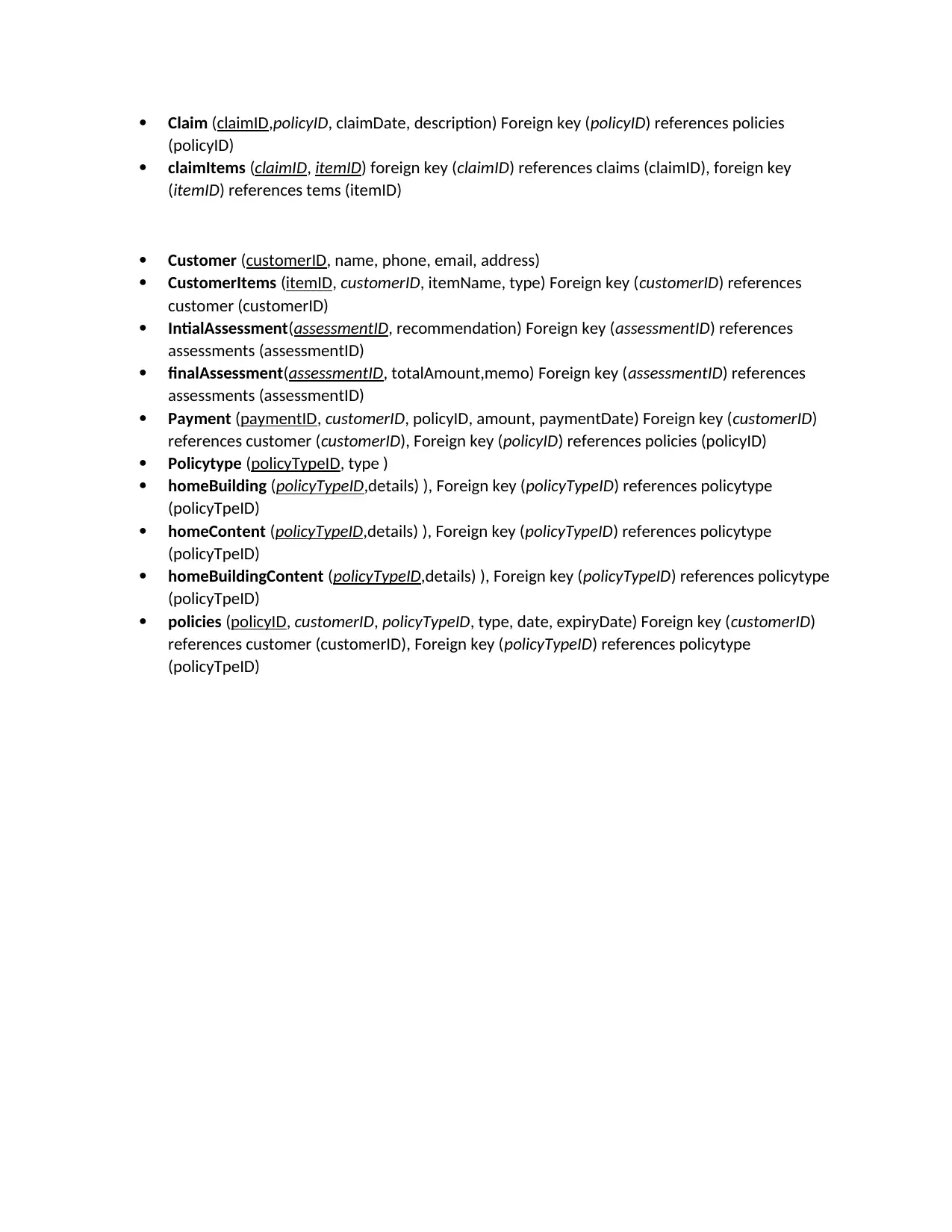CQI Insurance Database: ER Diagram, Logical Design & 3NF Relations
VerifiedAdded on 2023/06/13
|5
|762
|356
Report
AI Summary
This report outlines the database design for CQ Insurance (CQI), which offers home-buildings and home-contents insurance policies. The design includes an Entity Relationship (ER) diagram representing entities like Customer, Policy, Claim, Assessor, and Payment, along with their relationships. Business rules are defined, such as customers purchasing only one policy at a time and paying full premium for one-year coverage. Assumptions are made regarding policy changes and payment flexibility. The logical design translates the ER diagram into 3NF relations, including tables for Assessor, Assessments, Claim, ClaimItems, Customer, CustomerItems, InitialAssessment, FinalAssessment, Payment, PolicyType, HomeBuilding, HomeContent, HomeBuildingContent and Policies, ensuring data integrity and minimizing redundancy. This comprehensive design supports CQI's operations and data management needs. Desklib provides this document and many other solved assignments for students.
1 out of 5











![[object Object]](/_next/static/media/star-bottom.7253800d.svg)